Contents
What is it?
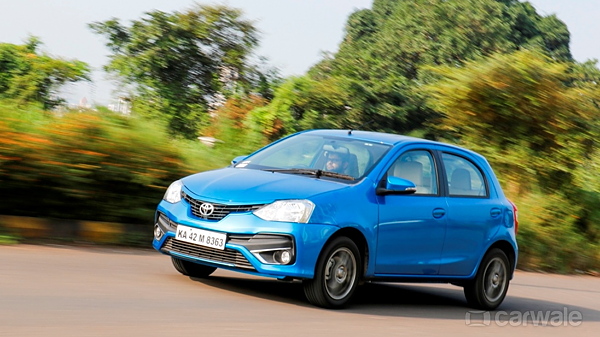
The updated Toyota Etios Liva has arrived at a fairly appropriate time for its Japanese carmaker. Sales of mid-size hatchbacks are booming owing to the current festive spirit as well as the long-running change in buying trends – buyers are now opting for large hatchbacks more than ever. In other words, it’s a hot segment to be throwing a new model into. So what’s ‘new’ in the fresh-for-2016 Etios Liva?
For starters, the front and rear bumpers are entirely new, the front more so. The fascia, in fact, is agreeably livelier than before, thanks to the animated look of the gaping grille and the chrome surrounds on the revised fog lamp housings. At the sides, you get the brilliant looking 15-inch alloys (first seen on the Sportivo trim) and as for the rear, there’s not much to differentiate except for the mildly restyled bumper. The updated Liva, then, is not much different than before but if you have got a liking for simple designs it will manage to leave a good impression, especially if it’s finished in the Ultramarine blue shade you see here.
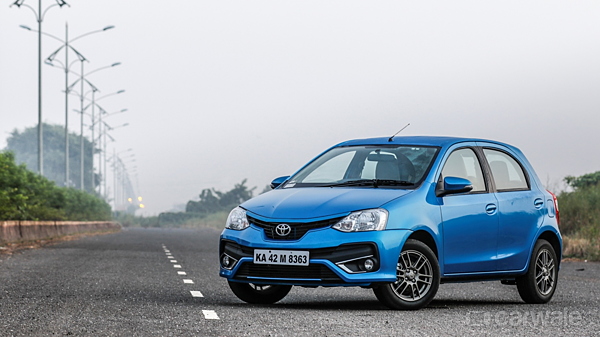
How is it on the inside?

Inside, standard fare includes the centrally-mounted instrument cluster and some quirky design bits like the vertically stacked air vents, just like in the old car. Now the layout may remain unchanged though what’s new is the dual tone treatment for the dashboard and a revised instrument panel. In terms of operability, the layout of controls and switchgear is clutter free and easy to use, however, there is still room for improvement when it comes to fit and finish. Sure, the cabin plastics have proved to be durable over the years but the overall design of the interior is starting to look old – small car cabins (Read: Hyundai Grand i10, Ford Figo) have improved drastically in the past couple of years, after all.
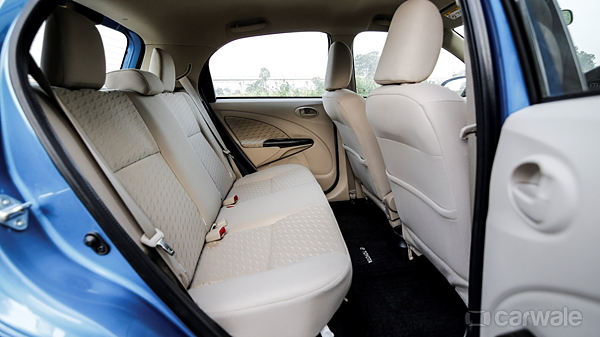
No such grouses with the seats and overall comfort. The driving position itself is good and with height adjustment for the steering and the driver’s seat, it doesn’t take much time to find a comfortable position. The large glasshouse and thin A and B pillars add to the ease of driving this fairly lightweight car. At the rear, there’s plenty of leg room and the flat rear bench means three adults can sit abreast in comfort. That said, under thigh support isn’t the most generous in this class – Toyota could have traded off some rear legroom for a longer seat base. All in all, the Liva continues to be as practical as the Etios sedan though there is a sizeable difference when it comes to boot space. While the latter houses a big 595-litre boot, the Liva has to do with less than half that with 251-litre of room.
How does it drive?
The updated Etios Liva can be had with either a 79bhp/104Nm 1.2-litre petrol or a 67bhp/170Nm 1.4-litre diesel engine. For this test, we have the free-revving petrol model that’s paired to a 5-speed maual gearbox.

With decent power and torque figures, the petrol Etios Liva gets off the line well and feels zippy around town. This is certainly helped by the light clutch action and good mid-range punch from the engine. While the latter certainly cannot be accused of being performance focused, it does the job of pottering around town well enough. The 5-speed manual, too, does a good job of slicing through the gears with minimal effort. Even if your daily driving involves spending a lot of time in traffic, you won’t find the Liva to be uncomfortable.
Progress is less impressive once you leave the city and hit highway speeds. The measly output means the Liva doesn’t pull as strongly as you would like, once above triple digit speeds. While the engine itself remains decently smooth if not the smoothest in class, the cabin is slightly on the noisy side. There’s some amount of road noise and wind noise filtering into the cabin – it’s not a concern within the city, but it’s definitely a factor on the highway.
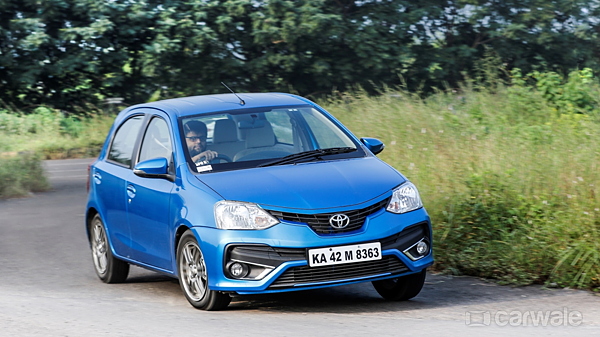
Like the old car, the ride quality is perhaps the strongest suite of the updated Liva. As you would expect, the suspension setup is on the softer side, however, the calibration is such that the Liva never feels overly soft or loose, even over large bumps and imperfections. At highway speeds it does tend to bounce around a bit especially when unladen but again, it’s not a worry at all. Overall, the ride quality is pretty much at the top in this segment.
Why should I buy one?
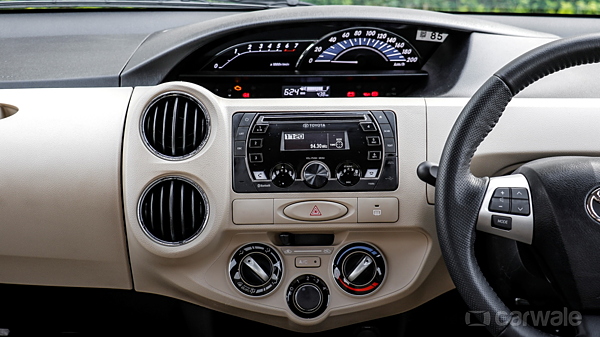
It’s an open secret that the Liva’s appeal is fairly limited, especially in the wake of much newer rivals. That being said, the little Toyota is hard to fault when it comes to ride quality and reliability. What’s more, Toyota has made constant improvements towards the safety aspect as well. As a result, the updated Etios Liva gets ABS with EBD and dual airbags as standard across all variants, meaning even the no-frills entry-level variants benefit from these essential safety aids.
Where does it fit in?

The updated Etios Liva is currently on sale with ex-showroom prices ranging between Rs 5.24 lakh to Rs 6.28 lakh for petrol-powered model whereas the diesel range is between Rs 6.1 lakh and Rs 7.44 lakh. At this price point, the Toyota competes with a bunch of mid-size hatchbacks including the Ford Figo, Nissan Micra and the Hyundai Grand i10.
Pictures by Kapil Angane
Click here to read variant-wise on-road prices and details of the new Toyota Etios Liva
Click here to read our first drive review of the Toyota Etios Platinum
What is it?

The updated Toyota Etios Liva has arrived at a fairly appropriate time for its Japanese carmaker. Sales of mid-size hatchbacks are booming owing to the current festive spirit as well as the long-running change in buying trends – buyers are now opting for large hatchbacks more than ever. In other words, it’s a hot segment to be throwing a new model into. So what’s ‘new’ in the fresh-for-2016 Etios Liva?
For starters, the front and rear bumpers are entirely new, the front more so. The fascia, in fact, is agreeably livelier than before, thanks to the animated look of the gaping grille and the chrome surrounds on the revised fog lamp housings. At the sides, you get the brilliant looking 15-inch alloys (first seen on the Sportivo trim) and as for the rear, there’s not much to differentiate except for the mildly restyled bumper. The updated Liva, then, is not much different than before but if you have got a liking for simple designs it will manage to leave a good impression, especially if it’s finished in the Ultramarine blue shade you see here.

How is it on the inside?

Inside, standard fare includes the centrally-mounted instrument cluster and some quirky design bits like the vertically stacked air vents, just like in the old car. Now the layout may remain unchanged though what’s new is the dual tone treatment for the dashboard and a revised instrument panel. In terms of operability, the layout of controls and switchgear is clutter free and easy to use, however, there is still room for improvement when it comes to fit and finish. Sure, the cabin plastics have proved to be durable over the years but the overall design of the interior is starting to look old – small car cabins (Read: Hyundai Grand i10, Ford Figo) have improved drastically in the past couple of years, after all.

No such grouses with the seats and overall comfort. The driving position itself is good and with height adjustment for the steering and the driver’s seat, it doesn’t take much time to find a comfortable position. The large glasshouse and thin A and B pillars add to the ease of driving this fairly lightweight car. At the rear, there’s plenty of leg room and the flat rear bench means three adults can sit abreast in comfort. That said, under thigh support isn’t the most generous in this class – Toyota could have traded off some rear legroom for a longer seat base. All in all, the Liva continues to be as practical as the Etios sedan though there is a sizeable difference when it comes to boot space. While the latter houses a big 595-litre boot, the Liva has to do with less than half that with 251-litre of room.
How does it drive?
The updated Etios Liva can be had with either a 79bhp/104Nm 1.2-litre petrol or a 67bhp/170Nm 1.4-litre diesel engine. For this test, we have the free-revving petrol model that’s paired to a 5-speed maual gearbox.

With decent power and torque figures, the petrol Etios Liva gets off the line well and feels zippy around town. This is certainly helped by the light clutch action and good mid-range punch from the engine. While the latter certainly cannot be accused of being performance focused, it does the job of pottering around town well enough. The 5-speed manual, too, does a good job of slicing through the gears with minimal effort. Even if your daily driving involves spending a lot of time in traffic, you won’t find the Liva to be uncomfortable.
Progress is less impressive once you leave the city and hit highway speeds. The measly output means the Liva doesn’t pull as strongly as you would like, once above triple digit speeds. While the engine itself remains decently smooth if not the smoothest in class, the cabin is slightly on the noisy side. There’s some amount of road noise and wind noise filtering into the cabin – it’s not a concern within the city, but it’s definitely a factor on the highway.

Like the old car, the ride quality is perhaps the strongest suite of the updated Liva. As you would expect, the suspension setup is on the softer side, however, the calibration is such that the Liva never feels overly soft or loose, even over large bumps and imperfections. At highway speeds it does tend to bounce around a bit especially when unladen but again, it’s not a worry at all. Overall, the ride quality is pretty much at the top in this segment.
Why should I buy one?

It’s an open secret that the Liva’s appeal is fairly limited, especially in the wake of much newer rivals. That being said, the little Toyota is hard to fault when it comes to ride quality and reliability. What’s more, Toyota has made constant improvements towards the safety aspect as well. As a result, the updated Etios Liva gets ABS with EBD and dual airbags as standard across all variants, meaning even the no-frills entry-level variants benefit from these essential safety aids.
Where does it fit in?

The updated Etios Liva is currently on sale with ex-showroom prices ranging between Rs 5.24 lakh to Rs 6.28 lakh for petrol-powered model whereas the diesel range is between Rs 6.1 lakh and Rs 7.44 lakh. At this price point, the Toyota competes with a bunch of mid-size hatchbacks including the Ford Figo, Nissan Micra and the Hyundai Grand i10.
Pictures by Kapil Angane
Click here to read variant-wise on-road prices and details of the new Toyota Etios Liva
Click here to read our first drive review of the Toyota Etios Platinum